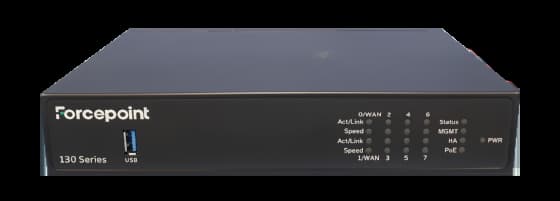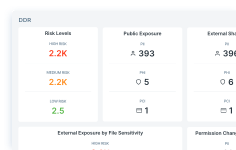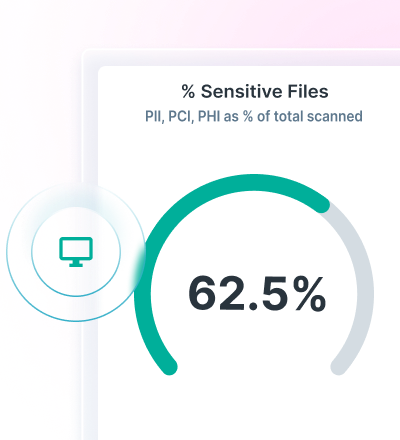
12K+ customers couldn't be wrong










































Scale and secure network access for offices, branches and remote locations.
Wide area networking — meet security. Forcepoint's managed SD-WAN solutions protect the network from advanced threats with zero trust security controls while maintaining superior connectivity anywhere in the world.
Why Forcepoint Secure SD-WAN?
Centralise management: Activate branches, offices and remote locations from the cloud. Configure policies once and use zero-touch deployment with the Secure Management Console (SMC).
Improve application performance: Reduce latency and jitter and ensure critical applications receive bandwidth priority through Multi-Link connectivity, dynamic traffic steering, application health monitoring and other features.
Protect against advanced threats: Detect and prevent risk using multi-layer inspection, intrusion prevention, DNS sink holding and more, while securing access to applications on-site or remote through the ZTNA Application Connector.
Reduce operating costs: Slash networking costs and improve reliability with real-time mixing and matching of local ISP broadband and private MPLS selection.
Datasheet
Compare Appliance Models


Global Network
20+
Countries
45+
Cluster Nodes
Clustering In a Way No One Else Can Do
Christian Keller, CISO at Huber + Suhner, lists reliability, clustering, and ability to navigate global compliance requirements among the top benefits of Forcepoint NGFW.
Explore Forcepoint Secure SD-WAN Models

3500 Series
Ideal for large enterprises, campus networks and data centers.
Up to 66 interfaces
Firewall throughput up to 600 Gbps
IPS NGFW throughput up to 140 Gbps

3400 Series
Ideal for campus networks and data centers.
Up to 67 interfaces
Firewall throughput up to 200-300 Gbps
IPS NGFW throughput up to 15-35 Gbps

2200 Series
Ideal for mid-sized and large offices.
Up to 25 interfaces
Firewall throughput up to 120 Gbps
IPS NGFW throughput up to 13.5 Gbps

1200 Series
Ideal for mid-sized and large offices.
Up to 17 interfaces
Firewall throughput up to 65 Gbps
IPS NGFW throughput up to 5 Gbps

350 Series
Ideal for remote sites and branch offices (desktop design).
Up to 13 interfaces
Firewall throughput 40 Gbps
IPS NGFW throughput 2 Gbps (N352) or 4.1 Gbps (N355)

130 Series
Ideal for remote offices, branches and stores.
Up to 8 interfaces
Firewall throughput 8 Gbps
IPS NGFW throughput 1,600 Mbps

120 Series
Ideal for brick-and-mortar locations and branch offices.
Up to 8 interfaces
Firewall throughput 4 Gbps
IPS NGFW throughput 450 Mbps

60 Series
Ideal for remote offices, branches and brick-and-mortar locations.
Up to 4 interfaces
Firewall throughput 4 Gbps
IPS NGFW throughput 700 Mbps
Virtual Appliances:
- Unified Forcepoint NGFW software
- Available for KVM and VMware ESXi and NSX
- Scales to 64 CPUs
- Automates network microsegmentation
- Can be clustered with physical firewalls
Cloud Images:
- Unified Forcepoint NGFW software
- Amazon Web Services (AWS)
- Microsoft Azure Solutions
- Secures both north-south communication in/out of cloud and SDN east-west traffic


The Buyer's Guide to Secure SD-WAN
Whether you're a first-time buyer or considering an upgrade, our guide has the key criteria to evaluate Secure SD-WAN solutions. Discover the five key considerations you must take into account.
Why Customers Choose Forcepoint's Managed SD-WAN
Why Customers Choose Forcepoint's Managed SD-WAN
"Our costs - both for the project and maintenance - are going down because we don't need resources locally, we have centralized everything. If we want new service on a train, we define the policy then give the hardware to the operator, who installs it."
VR Group
Frequently Asked Questions
What is managed SD-WAN?
A managed SD-WAN is a service where a provider handles the deployment, configuration, monitoring and optimisation of your WAN. Meanwhile, a cloud-managed SD-WAN adds centralised control via the cloud, making it easier to apply consistent policies, improve performance and maintain security across distributed networks without internal resource strain. Learn more about this product through our comprehensive managed SD-WAN solutions guide.
What are the benefits of SD-WAN?
Benefits of Forcepoint Secure SD-WAN include the following:
Centralized management
Improved application performance
Protection against advanced threats
Reduced operating costs
How much does SD-WAN cost?
SD-WAN costs are determined by factors, including the type of deployment, the size of the network, the number of locations to connect, the type and amount of data transiting the network and any existing infrastructure that may be leveraged when deploying an SD-WAN solution.
What is SD-WAN security?
SD-WAN security helps organizations enable effortless connection to cloud resources while protecting users, data and IT environments from attack.
What is an SD-WAN solution?
Ad SD-WAN solution applies software-defined networking principles to the wide area network.
What is an SD-WAN provider?
SD-WAN providers enable organizations to deploy SD-WAN technology.
What is an SD-WAN appliance?
SD-WAN appliances are physical or virtual controllers located on-premises or in the cloud that connect an organization’s users to applications, services and workloads.
How do SD-WAN appliances work?
SD-WAN appliances and products are designed to overcome the challenges of ensuring fast and secure connectivity for branch locations and hybrid workforces. The traditional wide area network uses a hub-and-spoke model that requires all traffic to flow through a central data center. For organizations with a highly distributed workforce, this model adds unacceptable levels of latency that negatively affect user experiences and productivity. Additionally, legacy WANs are built with costly Multiprotocol Label Switching (MPLS) connections that are time-consuming to manage and deploy, preventing organizations from scaling easily and cost-efficiently. SD-WAN overcomes these issues by creating a virtual overlay for the network that abstracts network connections and enables the use of additional, low-cost transport services that add redundancy and flexibility.
What is Multiprotocol Label Switching (MPLS)?
Multiprotocol Label Switching (MPLS) is data forwarding technology that increases the speed and controls the flow of network traffic.
What is SD-WAN vs MPLS?
SD-WAN is a networking technology that uses software to make wide area networks more intelligent and flexible by connecting sites directly to the internet over commodity broadband links. Configurations and access policies are centrally managed and easily applied across all sites, removing the need to manual administer each WAN device individually. MPLS is data forwarding technology for network traffic that directs data through a path via labels instead of requiring complex lookups in a routing table at every stop. Traditional networking technology, MPLS, has seen competition from SD-WAN solutions to meet today's high demands and expanding needs for networked business-critical systems.











